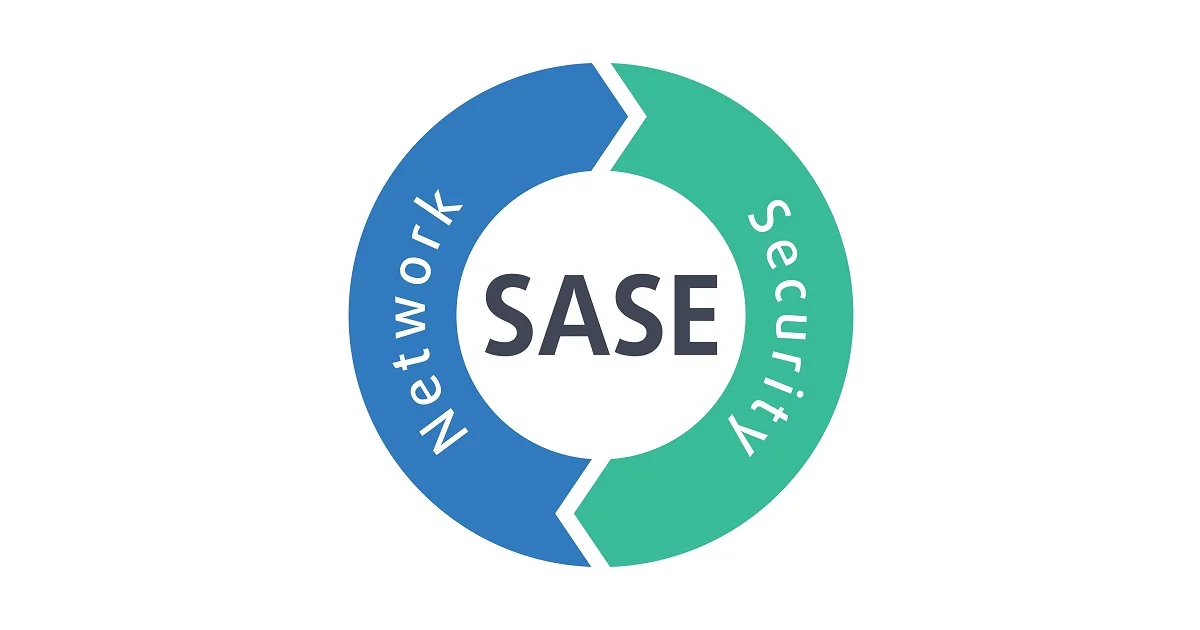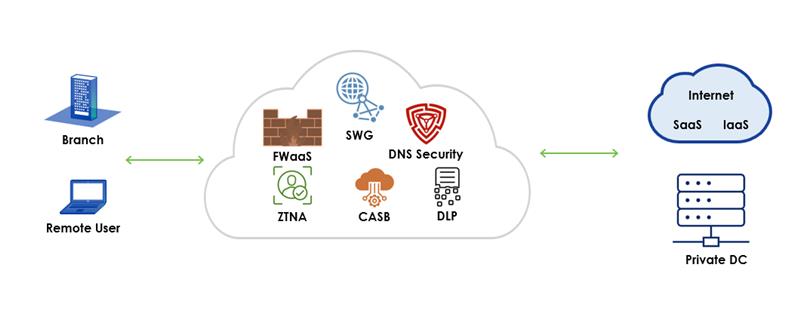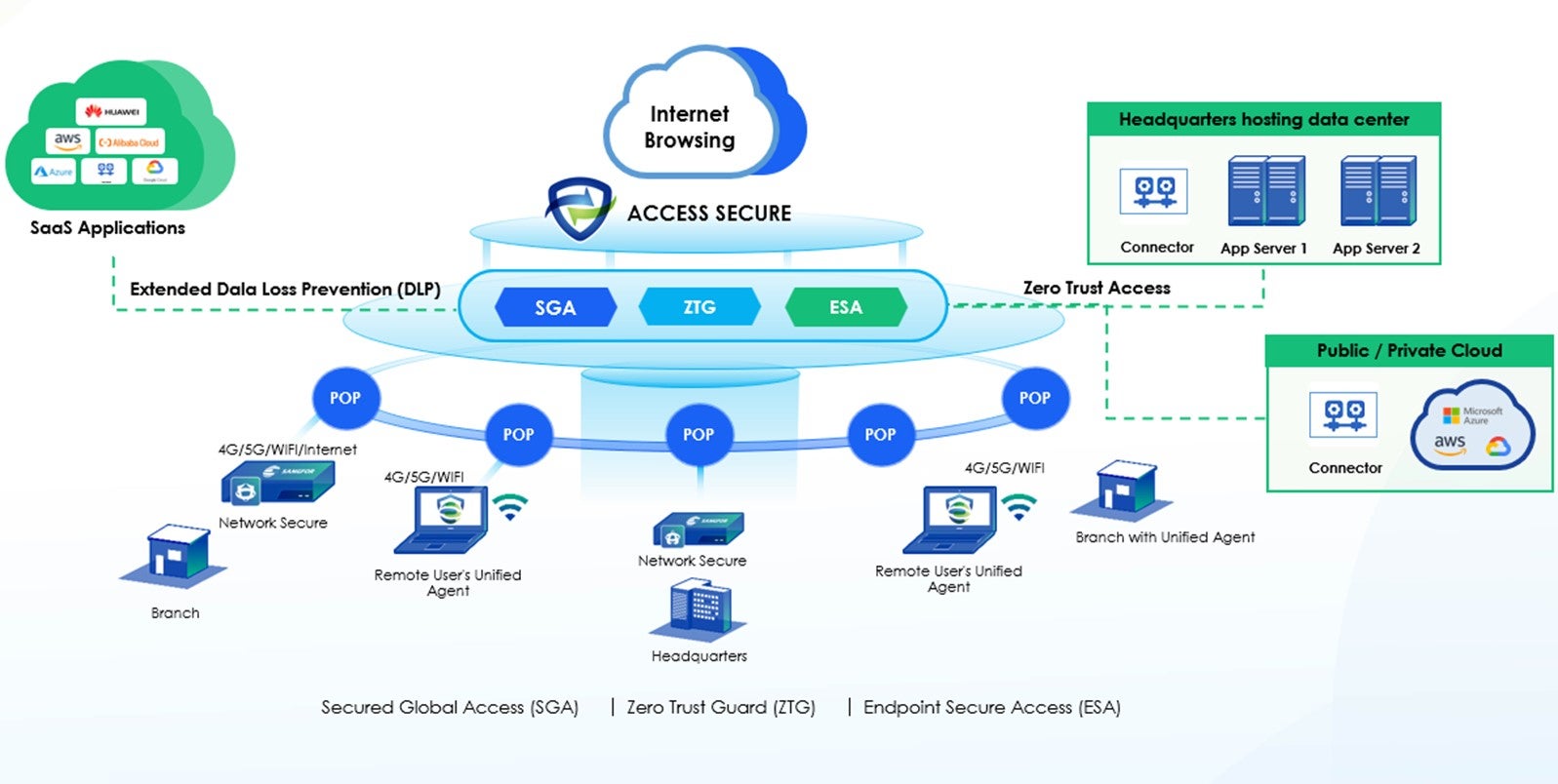In the evolving landscape of cybersecurity, there is no shortage of acronyms. Some have gained significant traction in recent years, such as Zero Trust Network Access (ZTNA), Secure Access Service Edge (SASE), and Security Service Edge (SSE). When a new term emerges, IT leaders must not only understand its meaning but also evaluate its relevance and whether it warrants changes to their security strategy.
In 2019, Gartner introduced SASE to help organizations strengthen network security and access control. However, just two years later, they added another term to the mix: SSE, creating some confusion. Why did we need this new addition to the cybersecurity dictionary, and how does SSE differ from SASE?
This article explores the differences between SASE and SSE, outlining their distinct features and benefits to help organizations determine the ideal solution for their needs.
What is SASE (Secure Access Service Edge)?
SASE (Secure Access Service Edge) is best understood as a framework rather than a specific technology. In traditional architectures where security capabilities and network services are often disjointed, SASE integrates networking and security into a unified, cloud-native service. This framework comprises two core hemispheres: Network-as-a-Service (NaaS) and Security-as-a-Service (SECaaS).

The Network-as-a-Service (NaaS) half of SASE focuses on optimizing and ensuring resilient access through capabilities such as:
- SD-WAN (Software-defined Wide Area Network)
- WAN optimization
- Quality of Service (QoS)
The Security-as-a-Service (SECaaS) half secures network traffic and application access by integrating the following technologies:
- Secure Web Gateways (SWG): Protects web usage with features such as URL filtering, internet access control, Intrusion Prevention Systems (IPS), and advanced threat protection.
- Zero Trust Network Access (ZTNA): Provides secure, direct access to private applications hosted in data centers or cloud services like AWS. Unlike VPNs, ZTNA follows the principle of least privilege. It grants application access based on context—that is, only when the user’s identity, device, and location meet strict security requirements.
- Firewall-as-a-Service (FWaaS): Delivers firewall protection across all ports and protocols without the need for physical or virtual appliances.
- Cloud Access Security Broker (CASB): Secures cloud-based resources and SaaS applications by enforcing enterprise security policies. CASB integrates with SaaS apps via APIs to scan for misconfigurations, detect sensitive data or malware in files at rest, and revoke risky or external file shares.
- Data Loss Prevention (DLP): Identifies sensitive data and enforces policies to prevent unauthorized exposure or leakage.
What is SSE (Security Service Edge)?
SSE (Security Service Edge) was coined by Gartner in 2021, two years after SASE. It was introduced to address the reality that many organizations were not ready to overhaul their security and connectivity on a large scale with SASE. Instead, they needed to start with a smaller scope for converging security capabilities.
Therefore, SSE consolidates and delivers security services exclusively. It combines SWG, ZTNA, FWaaS, CASB, and DLP into a single cloud-delivered platform. This enables secure access to the internet, SaaS and cloud applications, and specific internal applications—without managing WAN networking or site-to-site connectivity.
In essence, SSE is a subset of SASE. The security components within SSE fall under the broader, more comprehensive SASE framework.

SASE or SSE: Which Should You Choose?
The choice between adopting SASE or SSE depends on a complex interplay of an organization’s current needs, existing infrastructure, and future goals.
SASE
Organizations with distributed users, services, applications, and devices across locations and clouds need a solution to connect their end users effectively and securely. Traditional perimeter-based security architectures built with multiple disjointed on-premises security appliances and cloud security solutions lead to security gaps, management complexity, high costs, and low end-user productivity.
SASE offers an ideal solution for these distributed organizations. With SD-WAN extending traditional network perimeters to include all access points and the SSE component enabling secure, efficient access for remote users, SASE’s unified approach enhances security across the IT ecosystem while reducing complexity and saving administrators’ time.
SSE
While SASE routes network traffic through a cloud-native service platform that consolidates security and networking features, SSE focuses exclusively on securing the network edge. Therefore, SSE is ideal for organizations that rely heavily on direct internet access and cloud-based applications but do not require network enhancements like SD-WAN. These organizations often find SSE’s cloud-delivered security offerings both efficient and cost-effective.
Next Steps
For any organization, especially those with globally dispersed branches or a remote workforce, adopting a single-vendor SASE platform like Sangfor Access Secure is highly recommended. This solution provides the flexibility to pursue full SASE convergence or selectively implement specific SSE components within the SASE framework. This approach leaves the path open for future network transformation and architectural convergence, increasing business agility, simplifying operations, and lowering TCO.

Sangfor Access Secure offers both SSE and SASE capabilities, delivering unmatched flexibility for modernizing your networking and security architecture. In fact, Sangfor goes beyond Gartner’s definitions of SSE and SASE by allowing customers to tailor their adoption—choosing specific technologies like ZTNA, SWG, and others based on their unique needs. It offers a clear path to SASE convergence through the gradual adoption and migration of components without disrupting existing workflows.
Visit the Sangfor Access Secure webpage to discover how it can empower your organization’s secure connectivity goals.





